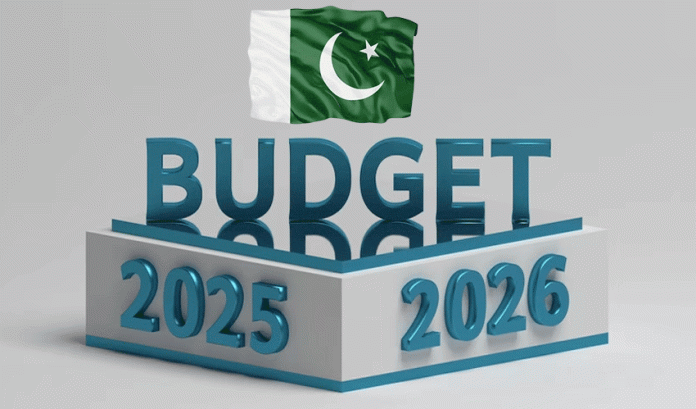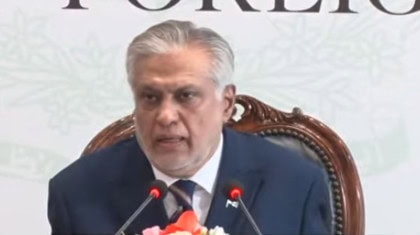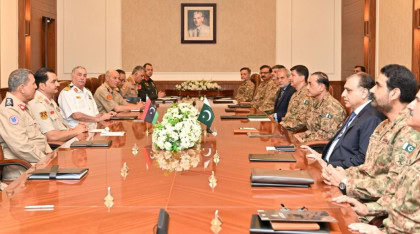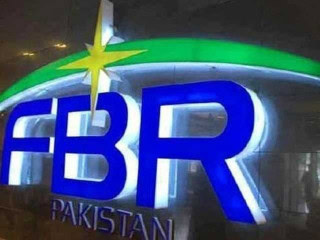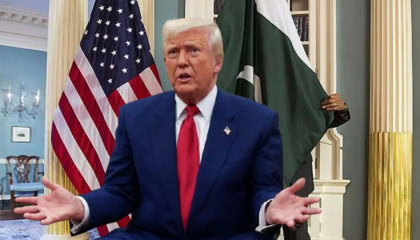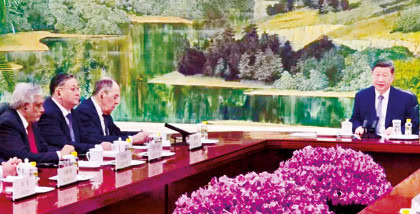ISLAMABAD – The Pakistan federal government is set to unveil its federal budget for the fiscal year 2025-26 on Tuesday (tomorrow). Key highlights and policy directions have already begun to emerge.
Today (Monday), the National Economic Survey will be presented, paving the way for this crucial budget announcement, which comes at a time of high inflation, increasing debt, and ongoing negotiations with the International Monetary Fund (IMF).
According to official sources, the government plans to present a budget of Rs 17,600 billion in Parliament. With an estimated revenue collection of Rs 19,400 billion, the Federal Board of Revenue (FBR) has been assigned a tax collection target of Rs 14,130 billion.
One of the most important allocations in the budget is Rs 6,200 billion, which will be dedicated to debt servicing. This highlights Pakistan’s ongoing challenges with both domestic and external borrowing.
Despite these substantial expenditures, the budget deficit target remains unchanged, reflecting the government’s delicate balance between spending and fiscal responsibility.
In a bid to provide some relief amid rising living costs, the government is proposing a 10% salary increase for government employees. At the same time, retired public servants may see their pensions increase by 5% to 7.5%.
Major Increases in Defence, Health, and Education
Pakistan’s defence budget is expected to increase by 18%, influenced by regional security challenges and inflationary pressures. On the development front, the federal government is likely to allocate:
– Rs 13.58 billion for education
– Rs 14.3 billion for the health sector
– Rs 16.22 billion for the digital economy and IT sector
These allocations reflect a commitment to modernisation and youth employment.
What to Expect
Finance Minister Muhammad Aurangzeb is anticipated to deliver the budget speech in the National Assembly on Tuesday, outlining the government’s economic roadmap, development priorities, and taxation reforms for the fiscal year 2025-26. The federal budget for this financial year will be presented in the National Assembly on June 10, according to the official schedule approved by Speaker Sardar Ayaz Sadiq.he speaker has finalised the calendar for the budget session, which outlines key dates for debate, discussion, and voting on the budgetary proposals and finance-related matters.
As per the schedule:
The budget presentation will take place on June 10.
The National Assembly will not meet on June 11 and 12.
The general debate on the federal budget will commence on June 13, with time allocated to all parliamentary parties for discussion.
The debate will continue until June 21.
The assembly will observe a break on June 22.
On June 23, the House will discuss the necessary expenditures for the upcoming fiscal year.
June 24 and 25 will be dedicated to discussions and voting on demands, grants, and cut motions.
On June 26, the National Assembly will debate and vote on the Finance Bill, followed by its formal approval on the same day.
The session will conclude on June 27 with discussions and voting on supplementary grants and other budgetary matters.
The speaker’s office has clarified that any changes to the announced schedule will only be made with the speaker’s approval.
The federal government has missed several of its economic targets, although there has been an overall improvement compared to the previous year, according to preliminary documents.
Sources reported on Sunday that the targeted GDP growth rate of 3.6% was not achieved, with actual growth recorded at 2.7%. Inflation was kept at 5%, significantly lower than the set target of 12%. Per capita income also fell short of expectations, standing at Rs 509,174, which is Rs 34,794 below the target of Rs 543,968.
The survey revealed that indirect tax revenue reached Rs 8,393 billion, surpassing the target of Rs 7,799 billion. However, the agricultural sector underperformed, with growth recorded at just 0.6% against a target of 2%. The output of major crops declined by 13.5% compared to a 4.5% decrease last year. Cotton production dropped by 30.7%, maize by 15.4%, and sugarcane by 3.9%. Additionally, paddy (rice) production fell by 1.4%, and wheat output decreased by 8.9%.
On a positive note, the yield of minor crops slightly exceeded expectations, reaching 4.8% compared to a target of 4.3%. Increases were also seen in the production of vegetables, fruits, oilseeds, spices, and fodder.
The industrial sector achieved a growth rate of 4.8%, surpassing its target of 4.4%. There was an increase in output in textiles, automobiles, garments, tobacco, and petroleum products. However, declines were noted in the food, chemicals, iron, steel, electrical machinery, and furniture industries.
The services sector fell short of its 4.1% annual target, recording only 2.9% growth. The construction sector, however, outperformed expectations, achieving growth of 6.6% against a target of 5.5%. Large-scale manufacturing contracted by 1.5% compared to a target of 3.5%, while small-scale industries grew by 8.8%, exceeding the 8.2% target.
In the electricity, gas, and water supply sector, growth surged to 28.9%, significantly exceeding the 2.5% target. The health sector achieved a growth rate of 3.7%, surpassing its target of 3.2%, while the education sector grew by 4.4%, exceeding its goal of 3.5%.
Private sector borrowing surged from Rs 294 billion to Rs 870 billion. Total revenue rose by 36.7% to Rs 13,367 billion, improving the tax-to-GDP ratio from 6% to 8%.
Finance Minister Muhammad Aurangzeb is scheduled to release the National Economic Survey for the current financial year today at 2:30 PM.

